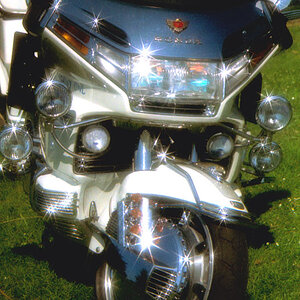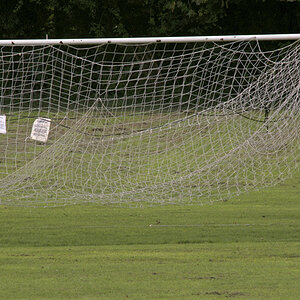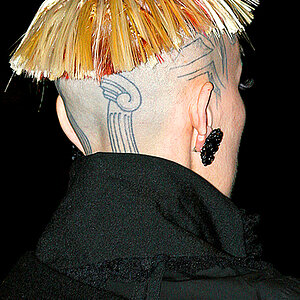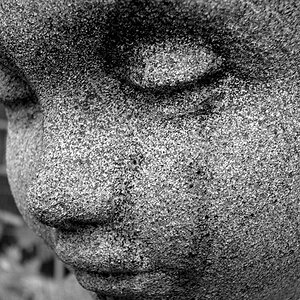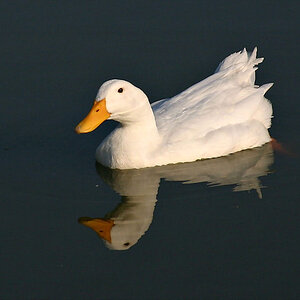Navigation
Install the app
How to install the app on iOS
Follow along with the video below to see how to install our site as a web app on your home screen.

Note: This feature currently requires accessing the site using the built-in Safari browser.
More options
You are using an out of date browser. It may not display this or other websites correctly.
You should upgrade or use an alternative browser.
You should upgrade or use an alternative browser.
First brief photography article on "the exposure triangle". Thoughts?
- Thread starter Katsi
- Start date
photoguy99
No longer a newbie, moving up!
- Joined
- Mar 20, 2014
- Messages
- 1,485
- Reaction score
- 313
Um. Where's the article? Did the moderator edit it out?
- Joined
- Jul 8, 2005
- Messages
- 45,747
- Reaction score
- 14,806
- Location
- Victoria, BC
- Website
- www.johnsphotography.ca
- Can others edit my Photos
- Photos OK to edit
It's coming... just a minor misunderstanding of forum policies! 
Reedforum
TPF Noob!
- Joined
- Mar 3, 2015
- Messages
- 3
- Reaction score
- 3
- Can others edit my Photos
- Photos NOT OK to edit
It's good that someone has written an easy to understand explanation of terms that are rather important in this field. More often than not, it's easy to get lost in definitions and numbers. Thanks for taking the time to put your knowledge onto paper. It will help a lot of people if they take the time to read through it. 
gsgary
Been spending a lot of time on here!
- Joined
- Oct 31, 2008
- Messages
- 16,143
- Reaction score
- 3,002
- Location
- Chesterfield UK
- Website
- www.gsgary.smugmug.com
- Can others edit my Photos
- Photos OK to edit
There is one part that is wrong, in shutter speed 5th paragraph increase shutter speed lets more light in [emoji107]
Also you mention raising iso gives you noise or grain, it only gives you noise
Also you mention raising iso gives you noise or grain, it only gives you noise
Last edited:
- Joined
- Apr 9, 2009
- Messages
- 41,401
- Reaction score
- 5,706
- Location
- Iowa
- Website
- kharrodphotography.blogspot.com
- Can others edit my Photos
- Photos OK to edit
Also, and depending on some other factors like image sensor size, from f/11 or so towards even smaller lens apertures blur starts increasing again because of diffraction.
The amount of light entering the lens doesn't change if shutter speed is changed.
How much light comes out the rear of the lens is determined by the lens aperture, the design of the lens, and how much light is lost in the glass elements in the lens.
Yes, the shutter speed is "the length of time that the camera’s shutter is open for".Shutter speed is simply the length of time that the camera’s shutter is open for. The longer it is left open for the more light that enters the lens.
The amount of light entering the lens doesn't change if shutter speed is changed.
How much light comes out the rear of the lens is determined by the lens aperture, the design of the lens, and how much light is lost in the glass elements in the lens.
Ysarex
Been spending a lot of time on here!
- Joined
- Nov 27, 2011
- Messages
- 7,135
- Reaction score
- 3,681
- Location
- St. Louis
- Can others edit my Photos
- Photos OK to edit
Get it proofed for grammar and spelling. It needs it.
Aperture is also referred to as the “f stop”, if you can’t find the aperture on your camera it is the number with the “F” in front of it.
The aperture is the opening in the lens. An f/stop is a value measurement and is written like this: f/2.8. There is no reason for it to be in quotes. It should be written out and not referred to as "F" or 'f'
The larger the aperture the more “open” the lens is and the more light that is let into the lens.
Your topic is the exposure triangle. You wrote paragraphs about the aperture but only the above sentence address its role in exposure. Your readers will miss that entirely; as far as your article is concerned the aperture has nothing to do with exposure.
This is true up until 1/1” or 1 second. In most DSLRs it is possible to have a shutter speed of up to 30 seconds, represented as 1/30”.
1/30 does not represent 30 seconds it represents 1/30 second.
You still want your photograph to be correctly exposed however and so you would increase the ISO, making your camera’s sensor more sensitive to light and therefore increasing the exposure of your image.
Increasing ISO does not make your camera's sensor more sensitive to light.
Get it proofed for grammar and spelling. It needs it.
You really did not address the topic of your article well: the exposure triangle. You wrote about the lens aperture and the shutter and ISO values but you didn't make the article a cohesive explanation of using those tools in the task of setting an exposure.
Joe
Aperture is also referred to as the “f stop”, if you can’t find the aperture on your camera it is the number with the “F” in front of it.
The aperture is the opening in the lens. An f/stop is a value measurement and is written like this: f/2.8. There is no reason for it to be in quotes. It should be written out and not referred to as "F" or 'f'
The larger the aperture the more “open” the lens is and the more light that is let into the lens.
Your topic is the exposure triangle. You wrote paragraphs about the aperture but only the above sentence address its role in exposure. Your readers will miss that entirely; as far as your article is concerned the aperture has nothing to do with exposure.
This is true up until 1/1” or 1 second. In most DSLRs it is possible to have a shutter speed of up to 30 seconds, represented as 1/30”.
1/30 does not represent 30 seconds it represents 1/30 second.
You still want your photograph to be correctly exposed however and so you would increase the ISO, making your camera’s sensor more sensitive to light and therefore increasing the exposure of your image.
Increasing ISO does not make your camera's sensor more sensitive to light.
Get it proofed for grammar and spelling. It needs it.
You really did not address the topic of your article well: the exposure triangle. You wrote about the lens aperture and the shutter and ISO values but you didn't make the article a cohesive explanation of using those tools in the task of setting an exposure.
Joe
Designer
Been spending a lot of time on here!
- Joined
- Apr 13, 2012
- Messages
- 18,505
- Reaction score
- 4,853
- Location
- Iowa
- Can others edit my Photos
- Photos OK to edit
You might be confused by this, but your "explanation" is unlikely to clarify the point for your readers.The terminology that refers to aperture can often confuse people. This is because it is said that a small ‘f’ value is a large aperture and a large ‘f’ value is a small aperture… confused?
The aperture value is a fraction, i.e.: 1/16. A larger denominator represents a SMALLER fraction, corresponding to a SMALLER aperture. Use the correct terminology and you will be most of the way toward explaining this better.
Designer
Been spending a lot of time on here!
- Joined
- Apr 13, 2012
- Messages
- 18,505
- Reaction score
- 4,853
- Location
- Iowa
- Can others edit my Photos
- Photos OK to edit
(update) I just checked out 6 more explanations and he is using some of the same terminology as the others are using.
Good luck with your blog, Katsi!
Good luck with your blog, Katsi!
tecboy
No longer a newbie, moving up!
- Joined
- Feb 17, 2012
- Messages
- 2,977
- Reaction score
- 358
- Can others edit my Photos
- Photos OK to edit
"The other thing to realise however is that the more you increase your shutter speed the more light you let in."
That is not correct. right?
The group of fireflies is not the right analogy for higher iso. Is the "higher iso" like an amplifier to increase more power to get more sensitive to the light?
That is not correct. right?
The group of fireflies is not the right analogy for higher iso. Is the "higher iso" like an amplifier to increase more power to get more sensitive to the light?
Last edited:
Ysarex
Been spending a lot of time on here!
- Joined
- Nov 27, 2011
- Messages
- 7,135
- Reaction score
- 3,681
- Location
- St. Louis
- Can others edit my Photos
- Photos OK to edit
Hey Joe! (great song)
As I said above I have since seen people describe ISO as increasing your cameras sensitivity to light and I have also seen people dispute it and argue it. Obviously someone is wrong and in this case I'm assuming it's me!! haha. I will try my best to come up with a more accurate and easily digestible description for ISO.
Yes that one causes a lot of confusion. Back in the film era a higher ISO film was more sensitive to light and that understanding has become a misunderstanding in the digital era. Nothing here to argue about; facts are simple and clear. The light sensitivity of a digital sensor is fixed in manufacture and can't be altered -- period. So when you raise the ISO on a digital camera something else must be happening. Think it through. And why does it matter?
Joe
- Joined
- Apr 9, 2009
- Messages
- 41,401
- Reaction score
- 5,706
- Location
- Iowa
- Website
- kharrodphotography.blogspot.com
- Can others edit my Photos
- Photos OK to edit
Yes, that better explains what a longer shutter speed does.Also again, I am aware that increasing the shutter speed doesn’t physically allow more light into the camera, I was trying to keep the concept simple and described it incorrectly, but I suppose it is better to describe as perhaps… “the longer the shutter speed the more time the cameras sensor is exposed to light”?
Using the word 'increasing' when applied to shutter speed, because we are usually using fractions of a second, many will mistake 1/1000 as an increase from 1/500 when the opposite is true. 1/1000 is a 2x smaller number than 1/500 is.
Most reactions
-
 457
457 -
 288
288 -
 270
270 -
 268
268 -
 211
211 -
 189
189 -
 179
179 -
 178
178 -
 176
176 -
 173
173 -
 162
162 -
 126
126 -
 117
117 -
I
108
-
 94
94
Similar threads
- Replies
- 1
- Views
- 500
- Replies
- 6
- Views
- 140
- Replies
- 4
- Views
- 216

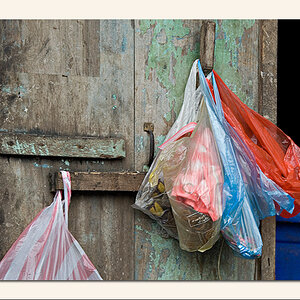
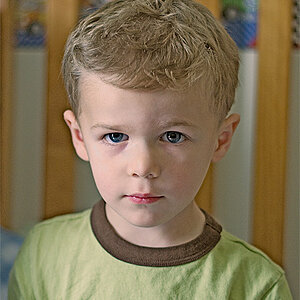
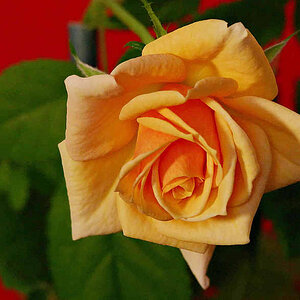
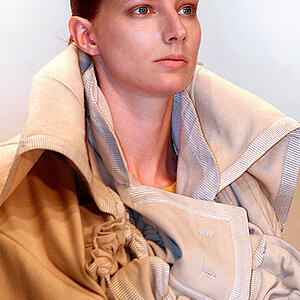
![[No title]](/data/xfmg/thumbnail/40/40285-2ce5915035c220ccb3485030863b62d0.jpg?1619739408)

![[No title]](/data/xfmg/thumbnail/32/32838-c28b0c47ca2cb319a1f97cc29ed60d61.jpg?1619735681)
